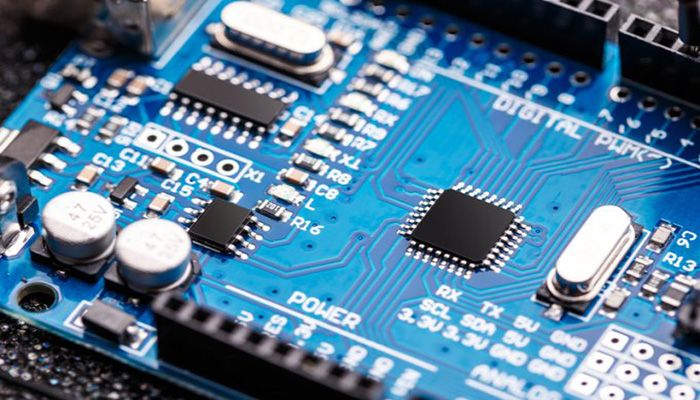
Sino-US 'Chip Wars': Taiwan Is in Disarray
Desk Report
Published: 06 Jun 2021, 07:12 pm

The United States has been a leader in the semiconductor industry for decades. In 2020, the country controlled 48 percent of the industry ($193 billion) in terms of revenue. Photo: Collected
Semiconductor, also known as ‘chips’, is
now at the center of economic growth, security and technological innovation though
it is smaller than a stamp in size. The impact of semiconductor on global
development, which is thinner than human hair and made up of about 40 billion
different components, is greater than that of the Industrial Revolution.
The Semiconductor is a ubiquitous
component in services ranging from smartphones to personal computers, the
Internet, electric cars, airplanes and electronic devices such as hypersonic
weapons, digital products and services such as e-commerce. On the one hand, the
demand for it is on the rise, and on the other hand, the industry is facing
huge challenges. At the same time, artificial intelligence (AI), Quantum
Computing, Internet of Things (IoT), modern wireless communication system,
Five-G and other semiconductor-capable devices are being created.
However, the ongoing Covid-19 epidemic
and international trade disputes are severely affecting the industry's supply and
value chain. In addition, its dominance in the technology sector has made the
supply chain between the United States and China riskier; which is causing
significant divisions in technology and international trade.
The United States has been a leader in
the semiconductor industry for decades. In 2020, the country controlled 48
percent of the industry ($193 billion) in terms of revenue. According to IC
Insight, 8 of the 15 largest semiconductor companies in the world are located
in the United States. Intel is in the number one position in terms of sales.
China, the net importer of
semiconductors, is heavily dependent on foreign manufacturers. In 2020, China
imported $350 billion worth of chip or semiconductor, which is 14.6 percent
more than in 2019. Although Made in China 2025 has accelerated the development
of the local semiconductor industry through the National Integrated Circuit
Industry Development, has reduced its dependence on the United States and
promoted itself to the level of world leader in technology over the past six
years.
China has been competing with the
United States since the time of former President Donald Trump. As this rivalry
grows, the United States is using tougher licensing policies to control the
export of semiconductor, and in the case of China, they are paying more
attention to complying with these rules. However, there are growing fears that
the China is taking over US technologies through military supply chains and
Chinese military and surveillance capabilities.
Amidst the conflict between the two
superpowers, Taiwan Semiconductor Manufacturing Corporation (TSMC), the world's
top manufacturer in the industry, is now in a state of disarray. The company
now controls 51.5 percent of the global semiconductor market and makes the
world's most advanced chips (10 nanometers or smaller). The United States and
China, such as Apple, Qualcomm, Broadcom and Shylinix, supply chips to
companies in both countries. A few days ago, the company also supplied parts to
Chinese technology company Huawei; But TSMC severed ties with the Chinese
company after the US Department of Commerce banned Huawei's products due to security
concerns.
On the other hand, steps taken by
former President Trump to strengthen American-Taiwanese relations have led to
increased regional tensions surrounding the Taiwan Strait and increased Chinese
military activity in the region. And for all these reasons, Taiwan has now
become the center of geopolitics. And all of these factors together have thrown
the global semiconductor industry into a complex situation. Presenting a part
of the complex ecosystem of this industry, it is also becoming difficult for
companies and countries to stay away from geopolitics amid the pressures
created by the Taiwan-US-China conflict. Geopolitics, trade and mountainous
technology disputes and the Covid-19 epidemic continue to damage its supply and
value chain. Semiconductor companies are trying to keep their production
activities safe by relocating warehousing or manufacturing facilities; but even
then, the industry is currently in a state of chaos.
The semiconductor industry is now at the center of the Sino-US strategic and technologically competitive relationship. The industry is currently facing various stages such as protective tariffs and non-tariff measures; which is hampering the manufacturing activities and competitiveness of the industry. An analysis of the FP Insider report states that the strategic relationship between China, Taiwan and the United States is now being reflected in the semiconductor industry. This shows how much the public and private companies involved in the industry are facing challenges.